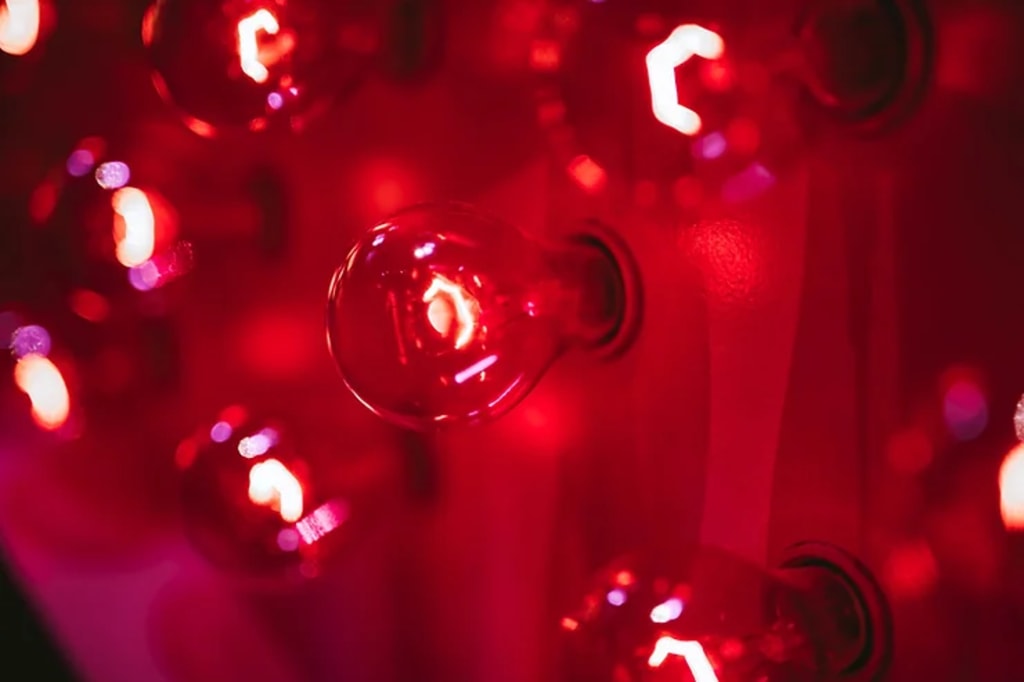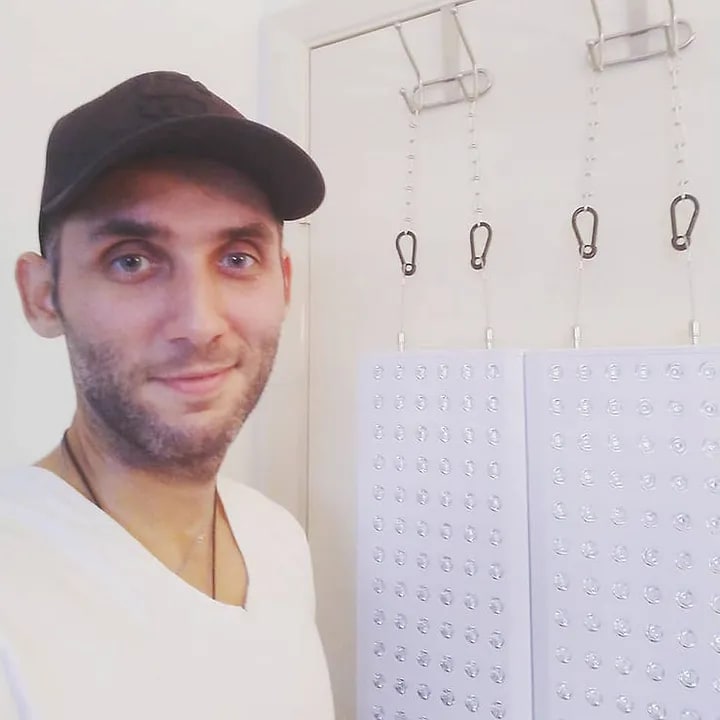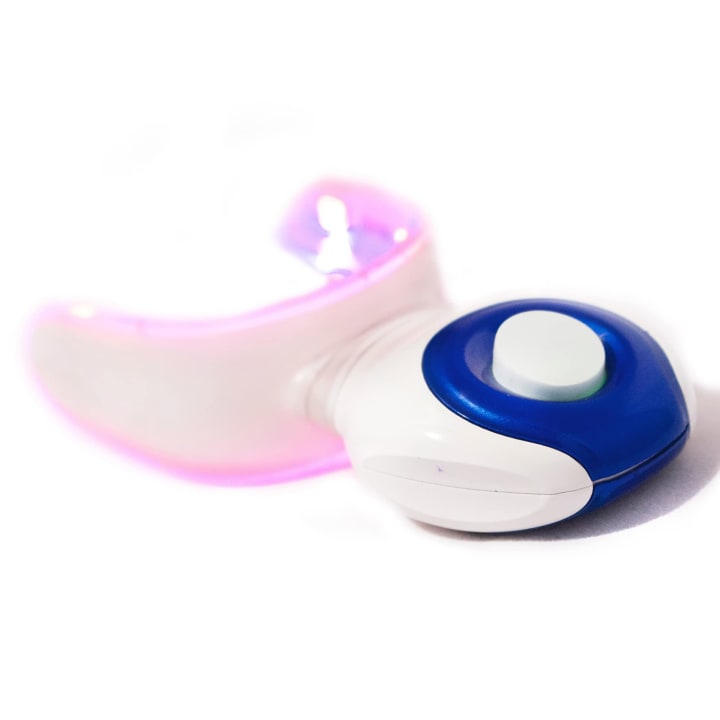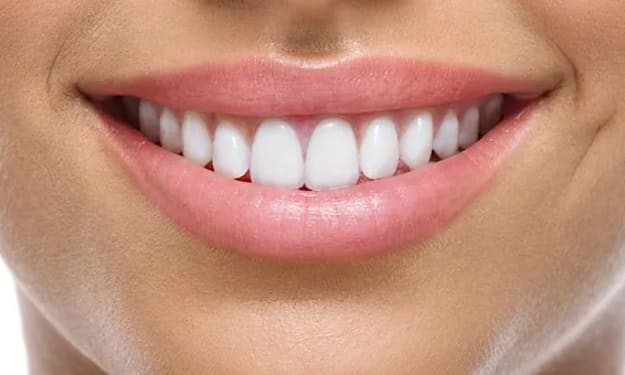Red Light Therapy: Everything You Need to Know
A review of the research and discussion of options

In this article you’re going to learn:
- What red light therapy is
- What the (amazing) research says about it
- Where to get the best quality and value for your home
Lazy Reader’s Section:
Red light therapy is a highly researched broad spectrum, non-invasive therapeutic for nearly everything in your health routine and it is a great recovery tool that works in unique ways supplements or other therapies don’t. My go-to choice for both quality and value is the PlatinumLED Biomax Series.
The Details:
From NASA to MIT and Harvard, red and near infrared light therapy has a robust history of research and benefits. How does it all work? The science is a little brain-boggling, but in essence certain frequencies can penetrate deeper into your cells and stimulate the movement of electrons. These free electrons allow for a more efficient functioning of your mitochondria by breaking up harmful compounds that get in the way of energy production. Nitric oxide, a byproduct of this complicated process, can compete with oxygen and “clog up” your mitochondria’s energy production. This doesn’t mean nitric oxide is bad, because remember it’s valuable for your Circulation and has many other benefits, but in the many-linked chain of energy production it can also act as a limiter like anything else.
Certain types of frequencies can give your cells a boost by stimulating the movement of electrons, which in turn creates a chain reaction in other molecules (like free hydrogen protons) to be utilized by your mitochondria to make energy, or ATP.(1) If that went over your head, don’t worry — it’s a little over mine, too. The important thing to remember is that specific light frequencies can have a drastic effect on your cells’ ability to produce energy and nourish your mitochondria directly. Since the health of your mitochondria are implicated in practically every condition we know, the benefits of this kind of therapy longterm are astoundingly broad.
Let’s consider what the robust amount of research has to say about red and near infrared light therapy so far:
1. The type of frequency matters and must be very specific to obtain these beneficial results.(2) In an interview with Dr. Michael Hamblin, a leading expert in photobiomanipulation and a medical adviser for a popular red light therapy company named Joovv, Dr. Hamblin discusses more details about these frequencies and why they matter.(3) While lasers are very effective, they are extremely expensive and our goal for healing is surface area. As a solution, high quality LEDs won’t overheat and are a cost effective way to deliver light over large areas. You also can’t really “overdo” red light therapy, whereas sitting in the sun for extended periods of time is definitely not good for your health.
Remember also that the amount of energy you’ll absorb from the sun is by orders of magnitude higher than in the same time spent in front of a red light therapy device. Additionally, the rays of the sun include a variety of light which, although beneficial to some degree, do not compare to the concentrated form of specific red and near infrared light coming from a specialized machine.
These are the types of light that really feed and stimulate your mitochondria. Finally, compared to infrared lamps, red and near infrared light is far superior for obtaining the benefits. Medium infrared or far infrared, which are often used in lamps and saunas, generate heat and do not offer the same mitochondrial support as red light or near infrared light.
2. Red and near infrared light therapy has shown to stimulate hair growth by as much as 35%, support the thickness of hair, help with hair transplants and aide in the maintenance of existing hair.(4–15)
3. It’s safe for the eyes and could be a potent healing therapy for glaucoma, optic nerve injury and offers faster recovery for ocular transplants than drugs.(16–30)
4. When compared to placebo light frequencies, the specific wavelengths of red and near infrared light that therapeutic devices use (660nm and 850nm) are totally different. They have shown to improve cognitive function, increase oxidative protection in the brain, increase brain circulation, help with reaction times, stimulate the expression of protective genes and signaling pathways, improve memory, mood, learning and decision making, and even be a potential treatment for Alzheimer’s, dementia, traumatic brain injuries and seasonal depression.(31–44)
5. Red and near infrared light therapy have shown to positively help regulate hormones like testosterone, estrogen and thyroid hormones, as well as reduce the need for thyroid medication and the level of TPO antibodies.(45–50)
6. There is little to no risk of side effects from red and near infrared light therapy based on a review of the literature by Harvard researchers.(51)
7. Therapy with these forms of light can help with weight and fat metabolism by dispersing fat cells, reducing cellulite and even regulating the hunger and satiety hormones ghrelin and leptin.(52)(53)(54)
8. Research has implicated this kind of therapy for increased circulation and reduced inflammation, as well as increased antioxidant production and stimulation of various protective heat-activated proteins in the cells.(55–60)
9. Red and near infrared light can help you look and feel younger by increasing collagen production, collagen density, improving wrinkles and complexion, increasing bone density, possibly preventing osteoporosis, increasing collagen fibers in your muscle tissue, supporting cartilage regeneration and reducing pain in your joints. (61–71)
10. Regular therapy can give a huge boost to your recovery by reducing muscle soreness, improving recovery times, aiding in growth of new muscle, delaying the onset of muscle fatigue if administered pre-workout, reducing inflammatory markers like creatine kinase (muscle breakdown), C-reactive protein and lactate. It has also been shown to facilitate better recovery from injury than other therapies like cryotherapy.(72–90)
11. In terms of sleep, red and near infrared light therapy has shown some promising results. People experienced reduced headaches and therapy also helped to change brainwaves from active and anxious to more relaxed states, often increasing average sleep per night by up to an hour. Red light therapy also seems promising for PTSD.(91–96)
12. Red light and near infrared light therapy has shown great results as a relief for arthritis and joint inflammation, supporting the ligaments and reducing symptoms significantly.(97–107) Ideally a mix of both is good because near infrared penetrates deeper into the skin and can work on joint and ligament tissues, whereas red light penetrates less and is good for skin, collagen and other related functions.
13. Red light therapy has been used as an effective treatment for patients with breast cancer,(108–111) often reducing the time needed for chemotherapy(112) and a review of PubMed and Google Scholar found robust evidence that it is beneficial as an adjunct therapy for patients with different cancers.(113) This part is slightly controversial, since some limited evidence has shown that light therapy may induce proliferation of cancer cells,(114–117) although what wasn’t clear in these studies were the usual factors like nutritional status, toxicities, genes and so on.
Red light therapy does give rise to ROS (reactive oxygen species) free radicals, and it’s suspected that these free radicals are behind the tumor inhibiting (and also possibly tumor-proliferating) mechanisms observed in the research. My suggestion is that, if you have a concern about cancer, do some more research on this end and decide if this is right for you.
14. In terms of oral health, red and near infrared light therapy presents a novel way to support several beneficial outcomes like healing the gums, remineralizing the enamel, supporting faster bite realignment(118) and, in the case of 415nm blue light, a simple and research based way to kill off bacteria and keep your mouth clean.(119–122)
And that’s about it. Even if you’re skeptical, the sheer amount of positive research combined with a highly skewed benefit to risk profile should be enough to at least encourage you to experiment with this novel and powerful tool. Remember, only specific types of frequencies do the trick, but most reputable companies have standardized their equipment to the research based frequencies of 660nm (red) and 850nm (near infrared).
At the end of this article I will also mention an oral health device that you can use that incorporates blue light at 415nm, along with these other two, for an inexpensive and unique addition to your oral care routine.
Where/What to Buy:
So now, with all these wonderful benefits, the next question is: where do you buy your magical red light machine? I’m going to share with you my experiences and reasons, but know that there is constant innovation in this area and the market is always changing.

I began my red light therapy journey with a company named Joovv several years ago (their lights are pictured above) and while I didn’t actually have a machine, they were the ones that caught my interest in this therapy initially. When I finally got the cash to afford my own setup, I was super excited to finally try it out. Unfortunately, a few things with Joovv put a sour taste in my mouth and led me to return the product, do more research and find an alternative.
The good news is that the alternative is way better and way more affordable.
In the end I’m grateful for this experience with Joovv because it lead me to find the PlatinumLED Biomax series which was a wonderful investment. For a few hundred bucks more, I got double the panels and a convenient stand to mount them on rather than haphazardly trying to hang them over my door like with the overpriced Joovv panels in the picture above (I look so happy though…little did I know).
Platinum LED panels are FDA class 2 medical devices, meaning they have undergone rigorous testing and controls, and they have a the highest warranty on the market of 3 years. Besides the affordability, these devices offer some other interesting and notable features:
1. Instead of just the standard 50% 660nm and 50% 850nm spread, the Biomax uses 40% of each of these frequencies and adds 10% 630nm, 5% 810nm and 5% 830nm. The reason for this diversification is that other frequencies with the red and near infrared spectrum have shown beneficial effects.(123) Generally, 600–650nm is red light which goes about 1–2 mm below your skin and 650–950nm is near infrared which penetrates up to 3mm or so below your skin. Having a diversified spread ensures that many parts of your body are getting benefits and they are the only company as of the time of this writing that offers all of these frequencies in their devices.
2. The Biomax has some of the highest irradiance and power density on the market, meaning it’s basically more energy than other comparable devices. What this means is that you can stand farther away and still absorb the same amount of energy over time, without worrying about EMFs or performance like I did initially with Joovv.
3. They have a low to near zero flicker rate compared to other models. Flicker rate can be significant for eye strain, head aches, seizures and other issues(124) and is just a good thing to have as low as possible in your lighting.
4. Probably the thing that did it for me besides the value was that Platinum LED’s website is an entire page dedicated to EMFs and a video of them testing their machine while it is running a program to show exactly what I was talking about earlier.(125) Up close the EMFs are relatively high, but they drop off to zero at 6 inches in their test video and with their equipment. This was paid extra attention to in their design process with protected parts and specialized casings, and I love that they were up front about something that is a genuine concern.
When I tested it using the same Trifield meter I used on Joovv’s devices, the ratings were considerably lower overall and the machine was quieter. Up close on contact the EMFs were high (about 30mG), but this is expected and actually not nearly as high as Joovv’s devices which were over 90mG in some spots. These fields dropped off very quickly though as I moved the meter away, with even 4–5 inches distance still falling within an acceptable level of between 2–3mG which made my day.
5. The setup of the devices was easy, their manuals much simpler and the stand I purchased to hold my panels (not offered by Joovv) was of solid quality. Overall, for a few hundred bucks more I got double the panels and a huge stand to roll them around and position them however I wanted to. Platinum also delivered all of their accessories and extra parts in one delivery, whereas my first Joovv delivery was missing parts, and by the time the rest came a few days later in a small package, I had already burned more money and time at Home Depot to get hanging accessories. Timing is everything.
Based on these experiences, I highly recommend the PlatinumLED Biomax Series and I am very pleased with my purchase. Their machines run clean, they are high quality, relatively affordable and everything has worked out great so far. They also have great customer service and the best warranty there is, so they are a solid choice all around in my opinion. There are many other wonderful companies out there, and in the end the key is to do your research and decide where the most value is. This is an expanding industry and the future will see a plethora of options, with many companies now offering mobile options like handheld panels which are very affordable and can be used to spot-treat specific conditions.

Bonus Gadget: Oral Red Light Therapy
On a slight tangent, the company Revive Light Therapy sells the DPL Oral Care device which at the time of this writing is the only class 2 FDA cleared medical device using this technology for oral care that I could find. It is very inexpensive, doesn’t emit harmful EMFs and a great investment in your oral health routine. Red and near infrared light has plenty of research on healing gums and helping teeth stay strong, and this simple device also uses 415nm blue light as an antibacterial for a comprehensive treatment.
I’ve used this device to successfully lower my gum pocket scores significantly in just 6 months (between two cleanings), and it is a painless intervention that is affordable and super easy to use.
Today I try to use red light therapy twice a day, in the morning and in the evening, and I stack my oral red light therapy at the same time that I do the full body panels with the Biomax. I also try to listen to a book on Audible while I wait, catch up on the news or emails or just use the time to relax and get totally present. I find it to be a great recovery tool that helps me heal and also helps me sleep. Because I do it in the morning and in the evening, it also helps to program my circadian rhythm by creating a wind-up and a wind-down routine.
I highly recommend red light therapy in any way that you can incorporate it because it can be a novel form of healing with minimal side effects. Although the price tag can be a little higher on some of the full body stuff, it’s worth it for the longterm insurance you have against so many degenerative conditions and the snazzy futuristic feeling you’ll get every morning as you soak in all those photons like a true BodyHacker.

Tudor Alexander is a certified health coach, former professional athlete and trainer and host of the Dance of Life Podcast.
For more information or to get in touch, please visit: www.danceoflife.com
References:
1. https://joovv.com/blogs/joovv-blog/how-red-near-infrared-light-stimulates-cellular-respiration-boosts-energy-production
2. https://www.ncbi.nlm.nih.gov/pmc/articles/PMC5215795/
3. https://joovv.com/blogs/joovv-blog/leading-light-therapy-researcher-explains-led-flicker-heat-lamp-limitations-photobiomodulation-treatment-times
4. https://www.ncbi.nlm.nih.gov/pmc/articles/PMC5523874/
5. https://www.ncbi.nlm.nih.gov/pubmed/29200764
6. https://www.ncbi.nlm.nih.gov/pubmed/30706177
7. https://www.ncbi.nlm.nih.gov/pubmed/29957664
8. https://www.ncbi.nlm.nih.gov/pubmed/30843235
9. https://www.ncbi.nlm.nih.gov/pubmed/24078483
10. https://www.ncbi.nlm.nih.gov/pubmed/25124964
11. https://www.ncbi.nlm.nih.gov/pubmed/28489273
12. https://www.ncbi.nlm.nih.gov/pubmed/28328705
13. https://www.ncbi.nlm.nih.gov/pubmed/25227429
14. https://www.ncbi.nlm.nih.gov/pubmed/30125485
15. https://www.jaad.org/article/S0190-9622(17)32739-1/fulltext
16. https://www.ncbi.nlm.nih.gov/pubmed/22595370
17. https://iopscience.iop.org/article/10.1088/1742-6596/992/1/012061/pdf
18. https://www.ncbi.nlm.nih.gov/pubmed/26149919
19. https://dc.uwm.edu/etd/4/
20. https://www.brightfocus.org/glaucoma/article/glaucoma-facts-figures
21. https://www.ncbi.nlm.nih.gov/pubmed/28619506
22. https://www.ncbi.nlm.nih.gov/pubmed/26928988
23. https://www.ncbi.nlm.nih.gov/pubmed/27090928
24. https://www.ncbi.nlm.nih.gov/pubmed/27276065
25. https://www.ncbi.nlm.nih.gov/pubmed/20822460
26. https://www.ncbi.nlm.nih.gov/pubmed/25558230
27. https://www.ncbi.nlm.nih.gov/pubmed/23840470
28. https://www.ncbi.nlm.nih.gov/pubmed/26795389
29. https://www.spiedigitallibrary.org/conference-proceedings-of-spie/7747/1/He-Ne-low-level-laser-therapeutic-applications-for-treatment-of/10.1117/12.883404.short?SSO=1
30. https://www.ncbi.nlm.nih.gov/pubmed/26622442
31. https://www.ncbi.nlm.nih.gov/pmc/articles/PMC5927185/
32. https://www.ncbi.nlm.nih.gov/pmc/articles/PMC5066074/
33. https://www.ncbi.nlm.nih.gov/pmc/articles/PMC5066074/
34. https://www.ncbi.nlm.nih.gov/pubmed/23200785/
35. https://www.ncbi.nlm.nih.gov/pubmed/26017772
36. https://www.ncbi.nlm.nih.gov/pubmed/28039085
37. https://www.ncbi.nlm.nih.gov/pubmed/28466195
38. https://www.ncbi.nlm.nih.gov/pubmed/30474306
39. https://www.ncbi.nlm.nih.gov/pubmed/28593105
40. https://www.ncbi.nlm.nih.gov/pubmed/28186867
41. https://www.ncbi.nlm.nih.gov/pmc/articles/PMC4560854/#B31
42. https://www.psychiatry.org/patients-families/depression/seasonal-affective-disorder
43. https://www.ncbi.nlm.nih.gov/pubmed/11477521
44. https://www.ncbi.nlm.nih.gov/pubmed/30346890
45. https://www.sciencedaily.com/releases/2016/09/160918214443.htm
46. https://www.ncbi.nlm.nih.gov/pubmed/22718472
47. https://www.ncbi.nlm.nih.gov/pubmed/23316383
48. https://www.ncbi.nlm.nih.gov/pubmed/20662037
49. https://www.ncbi.nlm.nih.gov/pubmed/25975382
50. https://www.ncbi.nlm.nih.gov/pubmed/29399303
51. https://www.ncbi.nlm.nih.gov/pubmed/24049929
52. https://www.ncbi.nlm.nih.gov/pubmed/28223291
53. https://www.hindawi.com/journals/ije/2012/530726/
54. https://www.ncbi.nlm.nih.gov/pubmed/21740089
55. https://www.ncbi.nlm.nih.gov/pmc/articles/PMC3635110/
56. https://www.ncbi.nlm.nih.gov/pubmed/24418801
57. https://www.ncbi.nlm.nih.gov/pmc/articles/PMC4148276/
58. https://www.ncbi.nlm.nih.gov/pmc/articles/PMC5523874/
59. https://www.ncbi.nlm.nih.gov/pmc/articles/PMC4148276/
60. https://www.ncbi.nlm.nih.gov/pmc/articles/PMC5523874/
61. https://www.ncbi.nlm.nih.gov/pubmed/24049929
62. https://www.ncbi.nlm.nih.gov/pmc/articles/PMC3926176/
63. https://www.ncbi.nlm.nih.gov/pubmed/19587693
64. https://www.ncbi.nlm.nih.gov/pubmed/16706695
65. https://www.ncbi.nlm.nih.gov/pubmed/30603597
66. https://www.ncbi.nlm.nih.gov/pubmed/26140461
67. https://www.ncbi.nlm.nih.gov/pubmed/30291464
68. https://www.ncbi.nlm.nih.gov/pubmed/26873500
69. https://www.ncbi.nlm.nih.gov/pubmed/21761120
70. https://www.ncbi.nlm.nih.gov/pubmed/27913970
71. https://www.ncbi.nlm.nih.gov/pubmed/29520686
72. https://www.ncbi.nlm.nih.gov/pubmed/16875447
73. https://www.ncbi.nlm.nih.gov/pubmed/24942380
74. https://www.ncbi.nlm.nih.gov/pubmed/18817474
75. https://www.ncbi.nlm.nih.gov/pubmed/24258312
76. https://www.ncbi.nlm.nih.gov/pubmed/23895414
77. https://www.ncbi.nlm.nih.gov/pubmed/21749263
78. https://www.ncbi.nlm.nih.gov/pubmed/21739259
79. https://www.ncbi.nlm.nih.gov/pubmed/29385005
80. https://www.ncbi.nlm.nih.gov/pubmed/20602109
81. https://www.ncbi.nlm.nih.gov/pubmed/16371497
82. https://www.ncbi.nlm.nih.gov/pubmed/16503786
83. https://www.ncbi.nlm.nih.gov/pubmed/16262577
84. https://www.ncbi.nlm.nih.gov/pubmed/29933277
85. https://www.ncbi.nlm.nih.gov/pubmed/24249354
86. https://www.ncbi.nlm.nih.gov/pubmed/19731300
87. https://www.ncbi.nlm.nih.gov/pubmed/27050245
88. https://www.ncbi.nlm.nih.gov/pubmed/22382875
89. https://www.ncbi.nlm.nih.gov/pubmed/27624781
90. https://www.jstage.jst.go.jp/article/islsm/2/3/2_90-OR-10/_article/-char/en
91. https://www.ncbi.nlm.nih.gov/pubmed/30427505
92. https://www.ncbi.nlm.nih.gov/pubmed/24568233
93. https://www.ncbi.nlm.nih.gov/pubmed/24288562
94. https://www.ncbi.nlm.nih.gov/pubmed/23182016
95. https://www.ncbi.nlm.nih.gov/pubmed/8979406
96. https://www.ncbi.nlm.nih.gov/pmc/articles/PMC4560854/#B48
97. https://www.ncbi.nlm.nih.gov/pubmed/29733117
98. https://www.ncbi.nlm.nih.gov/pubmed/29480363
99. https://www.ncbi.nlm.nih.gov/pubmed/28096711
100. https://www.ncbi.nlm.nih.gov/pubmed/27027049
101. https://www.ncbi.nlm.nih.gov/pubmed/22169831
102. https://www.ncbi.nlm.nih.gov/pubmed/12775206
103. https://www.ncbi.nlm.nih.gov/pubmed/27913970
104. https://www.ncbi.nlm.nih.gov/pubmed/12775206
105. https://www.ncbi.nlm.nih.gov/pubmed/26833862
106. https://www.ncbi.nlm.nih.gov/pubmed/10955339
107. https://www.ncbi.nlm.nih.gov/pubmed/30203577
108. https://pubmed.ncbi.nlm.nih.gov/28535427/
109. https://pubmed.ncbi.nlm.nih.gov/12973834/
110. https://www.spiedigitallibrary.org/conference-proceedings-of-spie/4166/1/Results-of-treatment-of-patients-with-second--to-third/10.1117/12.389507.short?SSO=1
111. https://pubmed.ncbi.nlm.nih.gov/27539464/
112. https://pubmed.ncbi.nlm.nih.gov/28464474/
113. https://pubmed.ncbi.nlm.nih.gov/29466089/
114. https://pubmed.ncbi.nlm.nih.gov/29160001/
115. https://pubmed.ncbi.nlm.nih.gov/25987972/
116. https://pubmed.ncbi.nlm.nih.gov/24526326/
117. https://pubmed.ncbi.nlm.nih.gov/23554211/
118. https://redlightman.com/blog/red-light-therapy-improves-all-oral-health/
119. https://www.ncbi.nlm.nih.gov/pmc/articles/PMC5699711/
120. https://www.ncbi.nlm.nih.gov/pmc/articles/PMC3438385/
121. https://academic.oup.com/jid/article/213/9/1380/2459537
122. https://drmuller.com/wp-content/uploads/light-therapy-research-articles/blue-light/LubartR.-A-possible-mechanism-for-the-bactericidal-effect-of-visible-light.pdf
123. https://platinumtherapylights.com/blogs/news/nir-the-most-advanced-led-therapy-light-spectrum?aff=66
124. https://www.alexfergus.com/blog/light-flicker-health
125. https://platinumtherapylights.com/blogs/news/emf-in-platinumled-therapy-light-devices-what-you-need-to-know
About the Creator
Tudor Alexander
Follower of Jesus Christ. Former professional ballroom competitor and trainer, certified health coach, author of 5 books and host of the Dance of Life Podcast.
For more information please visit: www.danceoflife.com






Comments (1)
Great to know! Red lights! Good work! Well done!